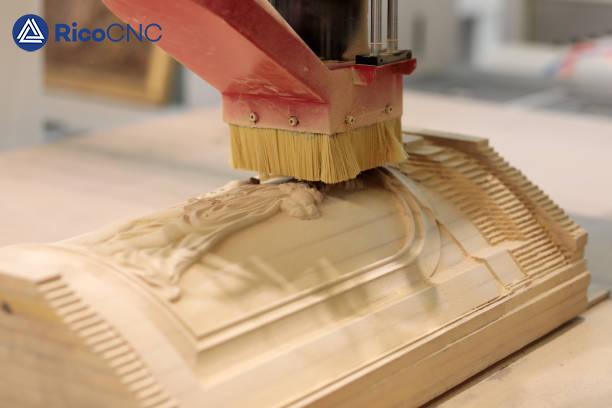
The use of CNC wood lathes has transformed woodworking by allowing for precision, efficiency, and greater creative possibilities. When paired with the right tools, CNC wood lathes become incredibly powerful machines capable of delivering impeccable results. Among these tools, carbide wood lathe tools have become the go-to choice for both beginners and seasoned professionals, thanks to their durability, ease of use, and the exceptional quality of finish they provide. In this guide, we'll explore the most effective ways to use CNC carbide wood lathe tools. We will also look at the various tool types, best practices, and insights that will help you elevate your woodturning projects.
Using carbide tools is not only about having sharp, strong cutting edges; it's also about understanding their use cases, maintenance, and how they fit into an automated CNC setup. As we proceed, we'll cover everything you need to know to get started, from basic carbide tool operations to advanced CNC integration.
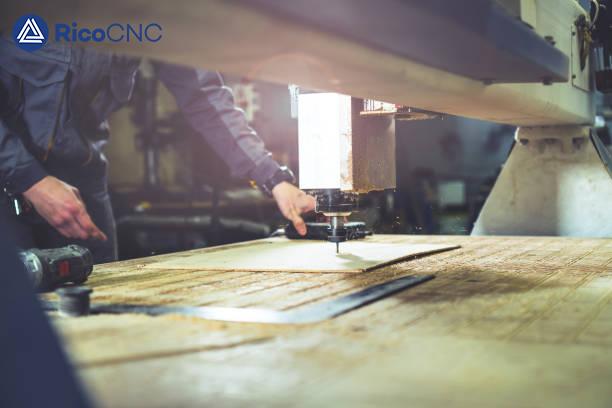
Carbide lathe tools are cutting tools used in CNC woodturning that are tipped with carbide inserts. Carbide is a composite material that is extremely hard, making it ideal for cutting and shaping wood efficiently. The tool's tip can be replaced when it becomes dull, which saves time compared to sharpening traditional tools.
Carbide lathe tools are generally available in several types, each designed for specific tasks:
· Roughing Tools: These tools are used to remove large portions of material quickly, preparing the piece for more detailed work.
· Finishing Tools: Ideal for smoothing the surface and creating the final shape.
· Detail Tools: Used for intricate designs, grooves, and detailing.
The advantage of carbide lies in its replaceable insert tooling, meaning that instead of sharpening, you can simply replace the dull carbide insert. This makes them user-friendly and ideal for both professionals and hobbyists.
While high-speed steel (HSS) tools are also popular in woodworking, carbide tools have some unique advantages:
|
Feature |
Carbide Tools |
High-Speed Steel Tools (HSS) |
|
Durability |
Keeps edge longer |
Requires frequent sharpening |
|
Ease of Use |
Replaceable inserts |
Needs manual sharpening |
|
Cut Quality |
Consistent with minimal effort |
Superior, but requires skill |
Carbide tools are often preferred because they do not require frequent sharpening, which makes them easier to use for long projects and saves significant time, especially in automated CNC applications.
Before you start using carbide tools, make sure your CNC wood lathe is properly set up. This includes ensuring that:
· The tool is installed securely in the tool holder.
· The center point of the tool matches the centerline of the workpiece. This helps in achieving accurate cuts.
· The machine is programmed to adjust the distance between the tool and the workpiece appropriately.
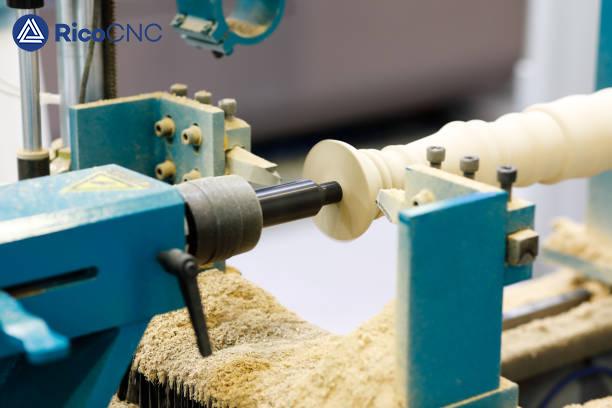
The performance of carbide wood lathe tools depends heavily on the proper selection of speed and feed rate. Using the wrong settings can lead to:
· Torn Grain: Cutting too aggressively can tear the wood fibers rather than slicing them, leading to a rough surface.
· Dull Inserts: Incorrect speed can cause premature wear on the carbide insert.
· Wood Type: Hardwoods generally require a slower speed and feed rate compared to softwoods.
· Tool Type: Roughing tools can handle higher feed rates, whereas finishing tools require slower, controlled movements.
· Cutting Depth: Deeper cuts require a slower feed rate to avoid overwhelming the tool.
Toolpath programming is essential for getting the most out of CNC woodturning with carbide lathe tools. Toolpaths define how the lathe will move relative to the workpiece to achieve the desired shape. Effective programming can:
· Maximize Efficiency: Reduce idle times and unnecessary tool changes.
· Improve Finish Quality: By programming a consistent cutting path, the surface quality of the workpiece will be more uniform.
· Roughing Pass: Removes bulk material. Carbide roughers are perfect for this step.
· Finishing Pass: Uses a lighter cut to achieve the desired surface finish. Carbide finishers are used here to ensure a consistent and smooth final result.
· Detail Pass: These passes involve specialized detailing inserts to create grooves and other intricate designs.
Carbide tools are durable, but their sharpness means they need to be handled with care. Here are some essential safety practices to keep in mind:
· Wear Proper Eye Protection: Chips from woodturning can travel at high speeds, making goggles essential.
· Keep Your Hands Away from the Cutting Area: Never place your hands near the cutting path while the CNC is operational.
· Secure the Workpiece: The wood should be properly secured before beginning any operation to prevent movement that could damage the work or tool.
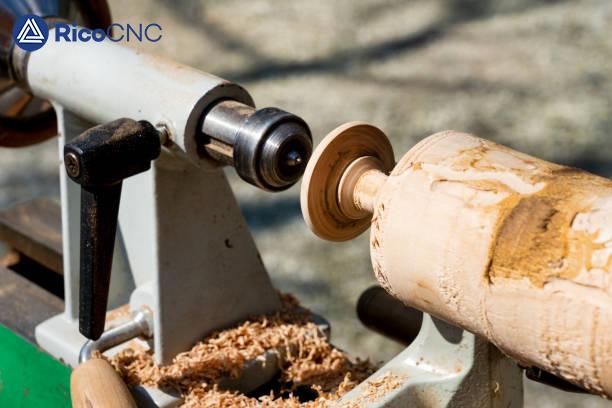
One of the main benefits of carbide wood lathe tools is that they have replaceable inserts, which makes them easier to maintain compared to HSS tools. Here are some key maintenance tips:
· Replace When Dull: Carbide inserts should be replaced when they show signs of wear. This helps maintain consistent cutting quality.
· Avoid Overheating: Overheating can cause inserts to lose their hardness. Use coolant where applicable, or ensure your lathe has an adequate cooling mechanism.
· Store Carefully: Keep spare carbide inserts in a safe, dry place to avoid chipping or other damage.
To fully utilize the automation capabilities of CNC lathes, it is common to use multiple carbide tools throughout the machining process. This is where tool changers play a significant role, allowing for seamless tool switching during a project. For example:
· Roughing Out: Start with a carbide rougher to remove material quickly.
· Intermediate Finishing: Switch to a more precise tool for initial shaping.
· Detailing: Use detailing inserts to complete the finer aspects of the design.
Another crucial element in using CNC carbide wood lathe tools effectively is understanding toolholders and length offsets:
· Toolholders: Ensure that the toolholders are compatible with your CNC lathe and are of good quality. Poor-quality holders can lead to vibrations that negatively affect precision.
· Length Offsets: Accurate length offsets ensure that the machine knows exactly where the cutting edge of each tool is located, which is essential for consistent results.
Tool path simulation is an advanced technique used by experienced CNC operators to prevent errors before they happen:
· Visualize the Tool Path: By running simulations, you can see how the tool will move and identify potential issues.
· Prevent Crashes: Errors in toolpath programming can lead to crashes, damaging both the workpiece and the tool. Simulation helps mitigate this risk.
Carbide inserts are replaceable tips on the cutting tools that do the actual work of cutting. They are important because they retain sharpness longer, offer consistent performance, and can be easily replaced without the need for sharpening.
Replace the carbide insert when you notice a decline in cutting performance, such as rougher finishes or increased vibration. If the tool begins to tear the grain rather than cutting smoothly, it’s time to change the insert.
Yes, carbide tools can be used on both softwoods and hardwoods. However, the cutting speed and feed rates will vary depending on the wood type.
Routine maintenance includes replacing dull inserts, ensuring toolholders are tight, and monitoring the coolant system to avoid overheating. Make sure the CNC machine is calibrated properly.
Automation enables greater precision, efficiency, and repeatability, particularly for complex projects involving multiple steps. Using automatic tool changers enhances productivity by switching tools without human intervention.
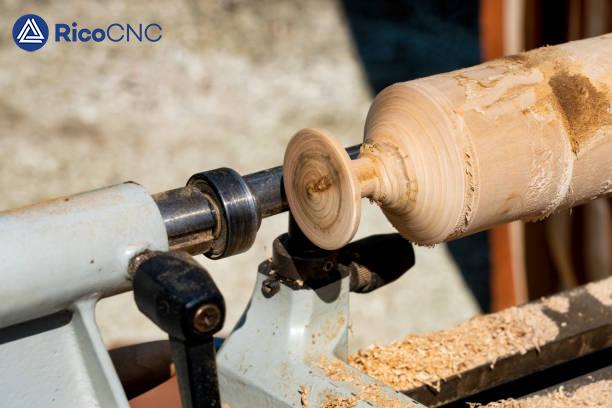
Mastering the use of CNC carbide wood lathe tools can significantly improve the quality of your woodturning projects. Their ease of use, durability, and ability to maintain a sharp cutting edge for long periods make them an excellent choice for CNC applications. By understanding different tool types, feed rates, and effective toolpath programming, you can elevate your woodworking capabilities and make the most of your CNC machine. Safety and maintenance are equally important, ensuring both the longevity of your tools and the quality of your projects.
If you're looking to enhance your CNC woodworking experience or have specific questions about carbide tools, feel free to contact us. We're always ready to assist with your automation and woodworking needs.
Contact: RicoCNC
Phone: 0086-13390848665
Tel: 0086-51268235075
Email: cncsale@ricocnc.com
Add: NO. 60, Weixin Road, Industrial Park, Suzhou, Jiangsu, China, 215000
 online service
online service 0086-15264185266
0086-15264185266 cncsale@ricocnc.com
cncsale@ricocnc.com